#dinosaur valley
Text
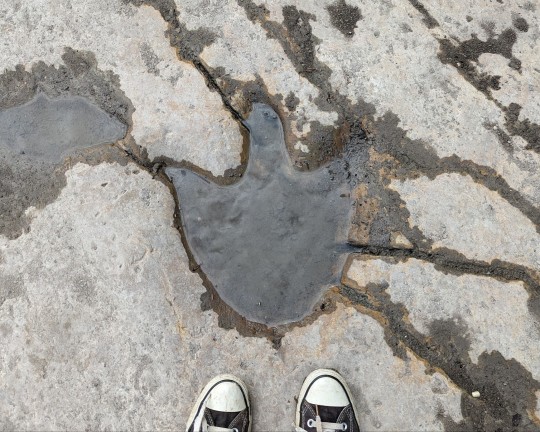
dinosaur valley state park
#mine#100#nature#nature blogger#nature blog#nature aesthetic#dinosaurs#dinosaur#dinosaurcore#fossil#geology#aesthetic#naturecore#rocks#animals#science#scienceblr#photography#dinosaur valley#dinosaur valley state park#texas#adventure#adventurecore#kidcore
217 notes
·
View notes
Text
So, about that “lichen”...
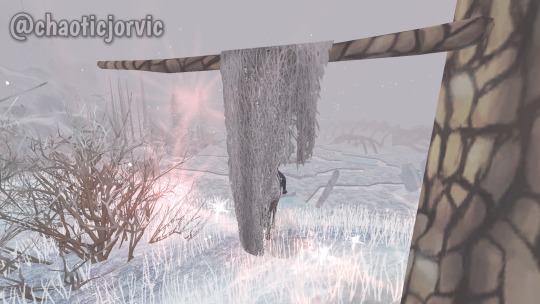
After probably ten years now of playing this game, I’ve never once reflected over the quests in Dino Valley where Professor Einstein asks MC to collect some lichen for the race flag poles. However, after taking a break from the game for about a month (maybe two, maybe three, I haven’t kept track of when I’ve been playing the game, only the updates that I’ve missed (*cough* rainbow horses *cough*)), I wanted to find out more exactly what this mysterious substance known as “lichen” is.
What I found on my brief trip through Google, though, wasn’t what I expected, and a small part of me is mildly grossed out from the thought.

Sorry, Google, what was that again? Could you please explain this to me as if I’m five years old? /ref

Okay, that—
So basically, what Einstein is asking us poor players to drag down from the freezing trees in the middle of buttass nowhere Dinosaur Valley, is literal fungus. My hands feel nasty. I will have to remind myself to take a thorough shower and make sure that Wizard gets a good, thorough clean once we’re back home in Tailtop Village.
Thank the lord for the existence of Soap. Aaaahhh

I hope you’ll be just as delighted as I now am upon the knowledge that MC have torn fungus down from freezing trees with their bare hands :)
Good day!
#star stable online#sso#star stable screenshots#jorvik#chaoticjorvic#wizardspice#dinosaur valley#valley of the hidden dinosaur#sso professor einstein#sso einstein#quests
32 notes
·
View notes
Text
> finds a new area on this island i moved to
> “dinosaur valley”
> looks inside
> pliosaur.
7 notes
·
View notes
Photo






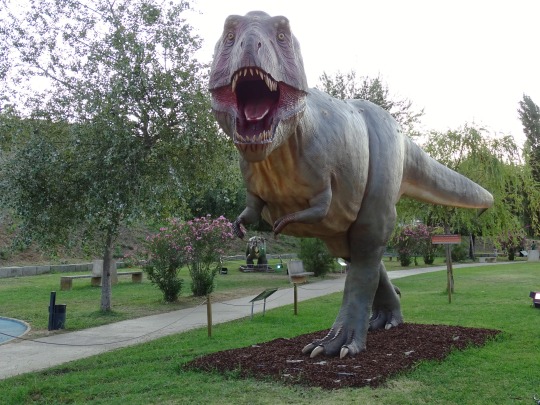
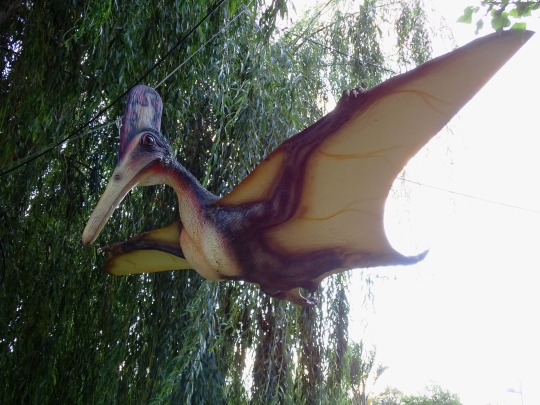
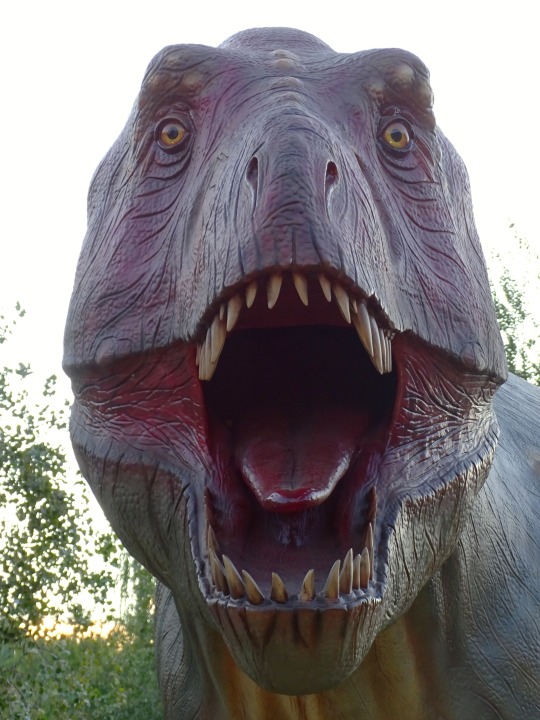

Dinosaurs Day
Today we celebrate those large, extinct reptiles: dinosaurs. Scientists believe they first appeared about 245 million years ago, at the beginning of the Middle Triassic Epoch, and existed for about 180 million years, going extinct about 66 million years ago at the end of the Cretaceous Period. The period when they lived is called the Mesozoic Era. During this time they went through many changes, and various species of dinosaurs replaced other species. Some dinosaurs were bipedal, meaning they walked on two legs, and some were quadrupedal, meaning they walked on all fours. Some switched back and forth. Some were covered with feathers, while others had what was almost like body armor. Some ran fast, and others were slow; most were herbivores, but some were carnivores. There were at least 700 species of dinosaurs, and possibly more than 1,000.
There were big biotic changes at the end of the Cretaceous Period, and many other animals and plants died at that time as well. There are many theories as to why dinosaurs died out, including disease, heat waves, cold spells, changing sea levels, large amounts of volcanic activity, the emergence of egg-eating mammals, or from X-rays from an exploding supernova. One other common theory is that an asteroid smashed to earth, spread ash widely, and shifted the earth's climate. However, it is not believed that all dinosaurs died out at the same time. Rather, it is believed they had been declining during the last part of the Cretaceous Period. Scientists also believe that some dinosaurs may have evolved into birds.
Richard Owen, an English anatomist, came up with the word "Dinosauria" in 1842. The word comes from the Greek word "deinos," meaning terrible or fearfully great, and "sauros," meaning reptile or lizard. He applied the term to three animals whose fossilized bones had been found over the previous few decades. The remains came from reptiles that were both larger and had more vertebrae than any found before. The earliest known published record of dinosaur remains was in 1820, and many fossils were found in the 1820s and 1830s. Many other kinds of dinosaurs were found in the years following the 1842 naming as well. Fossils of dinosaurs have now been found on all seven continents.
How to Observe Dinosaurs Day
The best way to celebrate the day is to visit a museum or other dinosaur-related attraction, where fossils or bones may be viewed. You could also watch a documentary about dinosaurs or a film that features dinosaurs, such as Jurassic Park. If you have children, there are many dinosaur-related activities they could do today.
Source
#T-Rex#Tyrannosaurus Rex#Dinosaurs Day#DinosaursDay#2 August#travel#Albufeira#Portugal#original photography#summer 2021#vacation#Centrosaurus#Pterodactylus#Allosaurus#Vale dos Dinossauros#tourist attraction#Dinosaur Valley#Parque do Ribeiro#Southern Europe#district of Faro#free admission#landmark#national day
3 notes
·
View notes
Text








my dinosaur hatched
#mr i dont believe anything thats not proved by science#oh if it didnt take forever to get the expressions right lol#art#doodles#comic#Farmer Crow#shane sdv#stardew valley#sdv#dinosaur sdv#long post
2K notes
·
View notes
Text
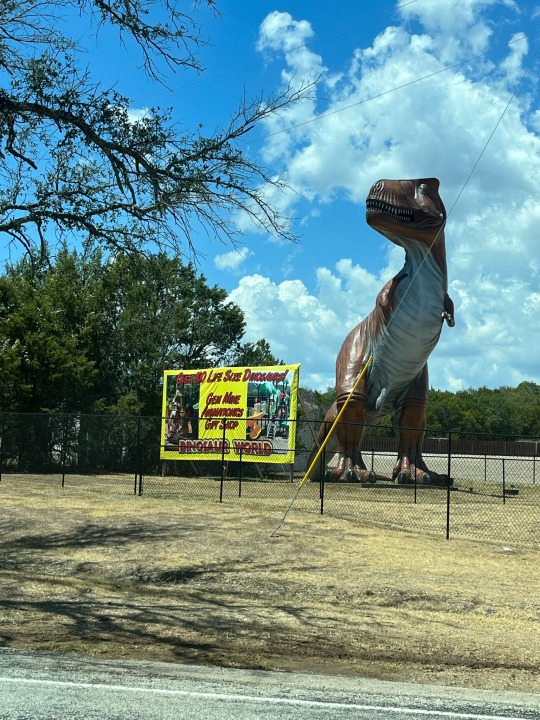



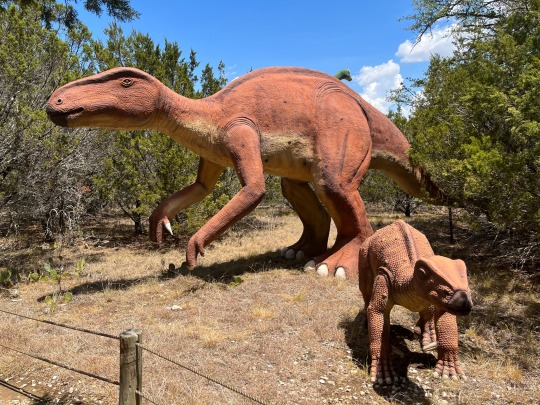





0 notes
Text
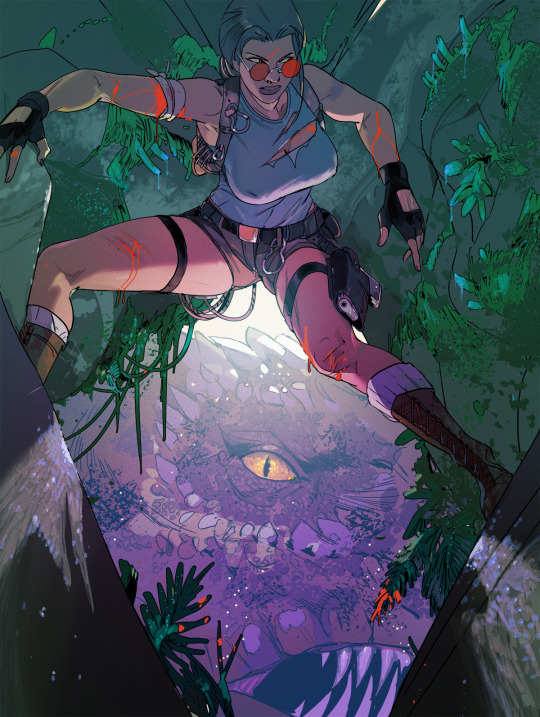
Lost Valley.
#lara croft#lara#tomb raider#classic#videogame#fanart#femalecharacters#digital art#illustration#digital illustration#digital painting#adventure#trex#t rex#dinosaur#lost#valley#hidden#bleeding#playstation#videogame character#gun#hurt#stone
408 notes
·
View notes
Text
Just picturing Shane freaking out that there's a fucking dinosaur on the farm. Whilst the farmer is squealing, picking up the baby dinosaur like a dog/cat talking in their baby voice to the baby dinosaur utterly gushing over it.
#pet dinosaur#stardew farmer#shane#sdv shane#shane stardew#stardew valley shane#shane x farmer#shane sdv#sdv farmer#stardew valley#stardew shane#shane stardew valley#he’s so cute
301 notes
·
View notes
Text
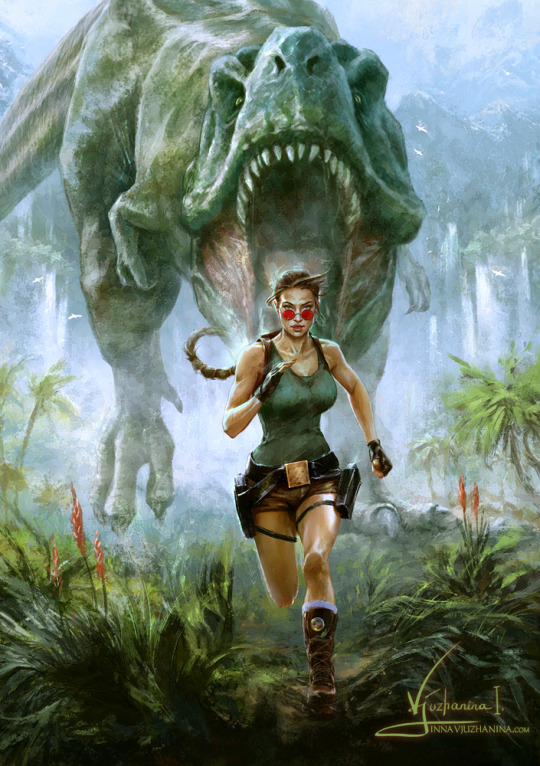

I had the honor to create cover art for a Polish book of "MAKING OF THE TOMB RAIDER" ♥
You can pre-order the book here.
Prints are available on my website.
#art#artwork#artists on tumblr#artist#cover art#book cover#lara croft#lara croft tomb raider#tomb raider remastered#trex#dinosaur#lost valley#adventure#tomb raider 1
252 notes
·
View notes
Photo
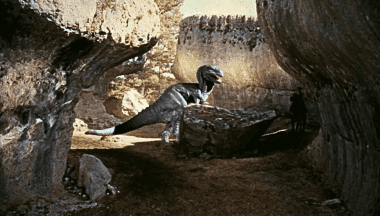



The Valley of Gwangi (1969)
#the valley of gwangi gif#ray harryhausen gif#stop motion gif#dinosaurs#60s fantasy movies#stop motion animation#special effects#gustavo rojo#sixties#1969#gif#chronoscaph gif
703 notes
·
View notes
Text
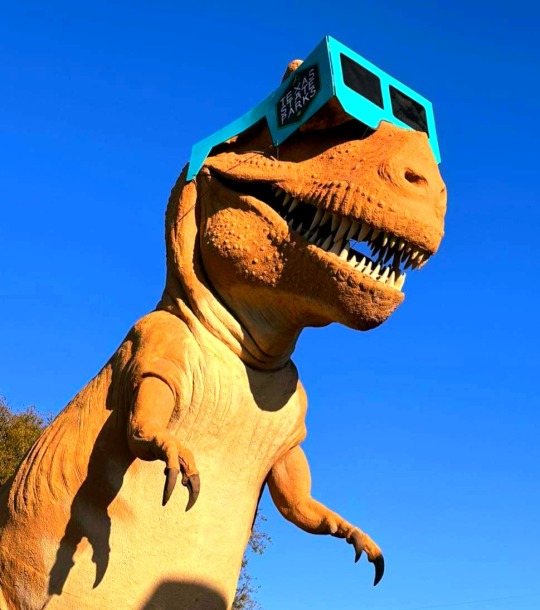
Ready for the e-clipse.
107 notes
·
View notes
Text
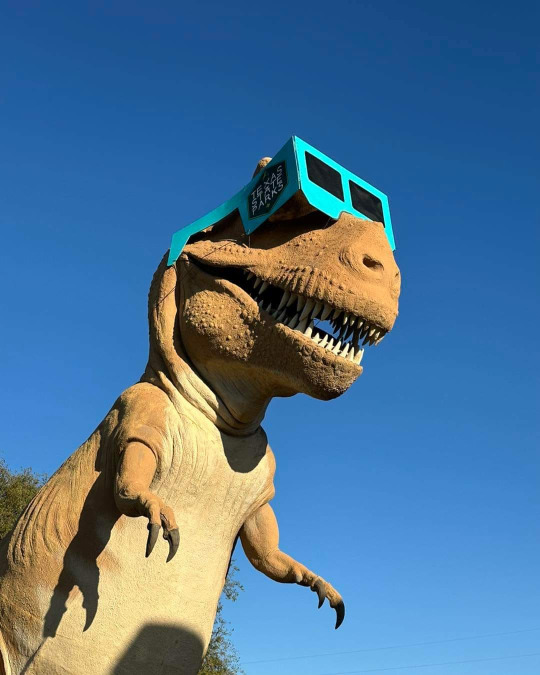
Rex the Dino at Dinosaur Valley State Park (@DinoValleySP) in Glen Rose, Texas wearing his special eclipse glasses.
134 notes
·
View notes
Text
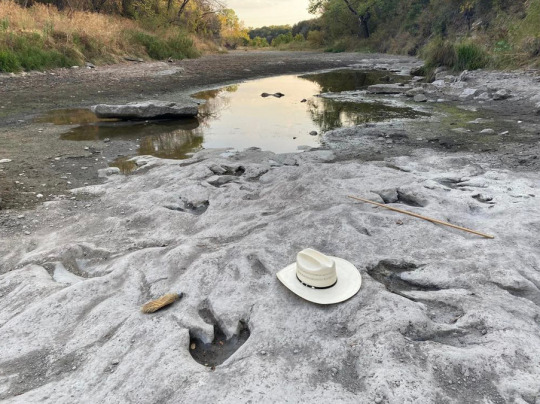
[ Some of the approximately 75 dinosaur tracks discovered at the site. Photo courtesy of Paul Baker / Friends of Dinosaur Valley State Park. ]
"Drought has dried up part of a river in central Texas, revealing 113-million-year-old dinosaur tracks.
The prehistoric footprints emerged at Dinosaur Valley State Park, which is located in the town of Glen Rose, southwest of the Dallas-Fort Worth area.
As the name suggests, the park already protects other dinosaur footprints. But the tracks that recently emerged are usually hidden under the mud, silt and waters of the Paluxy River. This summer, however, water levels have dipped so low that the prehistoric indentations are now visible. So far, volunteers have counted 75 newly exposed footprints in the parched riverbed.
“It has been another very hot, very dry year, so our researchers are trying to take advantage of the drought,” says park superintendent Jeff Davis to the Dallas Morning News’ Sarah Bahari.
Two different types of dinosaurs likely made the footprints, according to park officials. One was Acrocanthosaurus, a 15-foot-tall carnivore that weighed approximately 14,000 pounds. As the gargantuan reptile walked around the area on two legs, it left behind the outline of its three-toed feet. The other was Sauroposeidon proteles, which has been the official state dinosaur of Texas since 2009. This long-necked behemoth may have measured up to 100 feet long and weighed closer to 88,000 pounds. It left behind larger, bulbous-shaped tracks that are similar to elephant footprints."
Read more: "Drought Reveals 113-Million-Year-Old Dinosaur Tracks in Texas" by Sarah Kuta.
#palaeoblr#Dinosaur Valley State Park#Texas#Acrocanthosaurus#Sauroposeidon#Dinosaurs#Cretaceous#Mesozoic#Prehistoric#Extinct#Theropod#Sauropod#Sauroposeidon proteles#Trace fossil#Article#Photo
280 notes
·
View notes
Text
one thing that always bugged me about the kalltar was that they had fjord horses. i know it was just a cool way to integrate them into the game and jwhs didnt exist yet but it just doesnt make sense. why are the magical fantasy people hidden away in the most remote area of a tiny fantasy island selling you norwegian horses. OH SHIT, like i said i know jwhs werent a thing but they couldve had like snowy robust jorvik wilds. which reminds me of my old brinicle design… oh well only in my dreams ig
2 notes
·
View notes
Photo


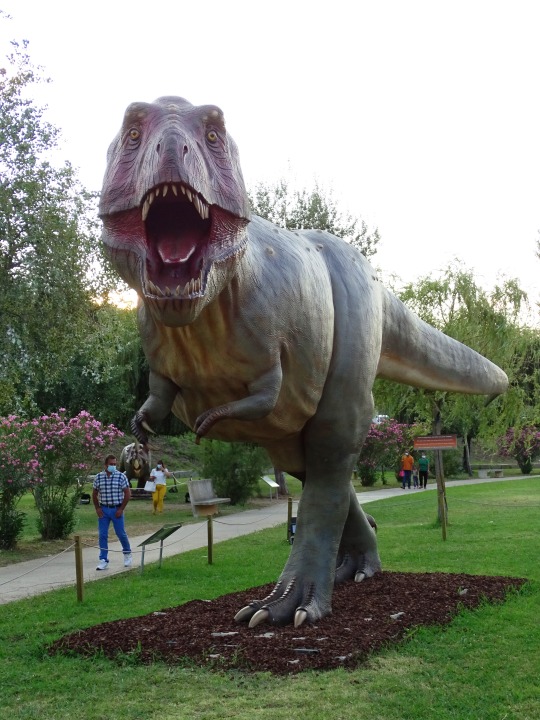


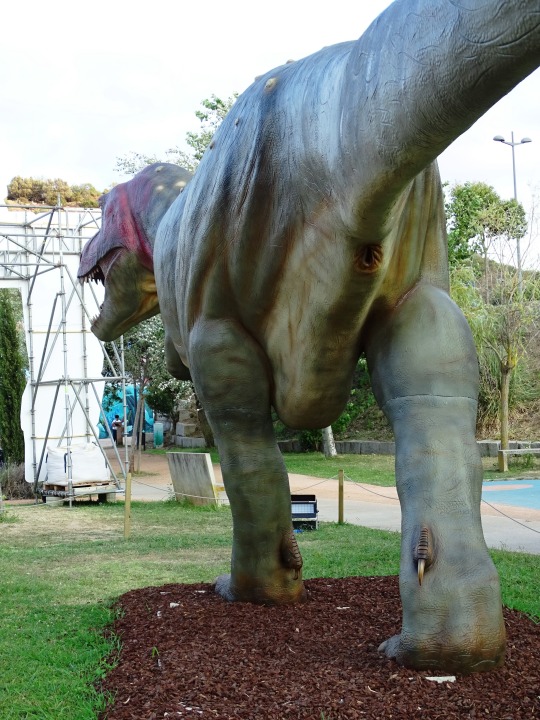




Vale dos Dinossauros, Albufeira (No. 3)
Tyrannosaurus is a genus of large theropod dinosaur. The species Tyrannosaurus rex (rex meaning "king" in Latin), often called T. rex or colloquially T-Rex, is one of the best represented theropods. Tyrannosaurus lived throughout what is now western North America, on what was then an island continent known as Laramidia. Tyrannosaurus had a much wider range than other tyrannosaurids. Fossils are found in a variety of rock formations dating to the Maastrichtian age of the Upper Cretaceous period, 68 to 66 million years ago. It was the last known member of the tyrannosaurids and among the last non-avian dinosaurs to exist before the Cretaceous–Paleogene extinction event.
Like other tyrannosaurids, Tyrannosaurus was a bipedal carnivore with a massive skull balanced by a long, heavy tail. Relative to its large and powerful hind limbs, the forelimbs of Tyrannosaurus were short but unusually powerful for their size, and they had two clawed digits. The most complete specimen measures up to 12.3–12.4 m (40.4–40.7 ft) in length, though T. rex could grow to lengths of over 12.4 m (40.7 ft), up to 3.66–3.96 m (12–13 ft) tall at the hips, and according to most modern estimates 8.4 metric tons (9.3 short tons) to 14 metric tons (15.4 short tons) in weight. Although other theropods rivaled or exceeded Tyrannosaurus rex in size, it is still among the largest known land predators and is estimated to have exerted the strongest bite force among all terrestrial animals. By far the largest carnivore in its environment, Tyrannosaurus rex was most likely an apex predator, preying upon hadrosaurs, juvenile armored herbivores like ceratopsians and ankylosaurs, and possibly sauropods. Some experts have suggested the dinosaur was primarily a scavenger. The question of whether Tyrannosaurus was an apex predator or a pure scavenger was among the longest debates in paleontology. Most paleontologists today accept that Tyrannosaurus was both an active predator and a scavenger.
Specimens of Tyrannosaurus rex include some that are nearly complete skeletons. Soft tissue and proteins have been reported in at least one of these specimens. The abundance of fossil material has allowed significant research into many aspects of its biology, including its life history and biomechanics. The feeding habits, physiology, and potential speed of Tyrannosaurus rex are a few subjects of debate. Its taxonomy is also controversial, as some scientists consider Tarbosaurus bataar from Asia to be a second Tyrannosaurus species, while others maintain Tarbosaurus is a separate genus. Several other genera of North American tyrannosaurids have also been synonymized with Tyrannosaurus.
As the archetypal theropod, Tyrannosaurus has been one of the best-known dinosaurs since the early 20th century and has been featured in film, advertising, postal stamps, and many other media.
Source: Wikipedia
#Centrosaurus#Tyrannosaurus#Tyrannosaurus Rex#T Rex#Dinosaur Valley#dinosaur#Vale dos Dinossauros#Albufeira#free admission#Portugal#travel#summer 2021#original photography#district of Faro#Southern Portugal#Southern Europe#tourist attraction#evening light#vacation#landmark#cityscape#lawn#flora#nature#tree#park
3 notes
·
View notes
Text

I really like this idea
758 notes
·
View notes